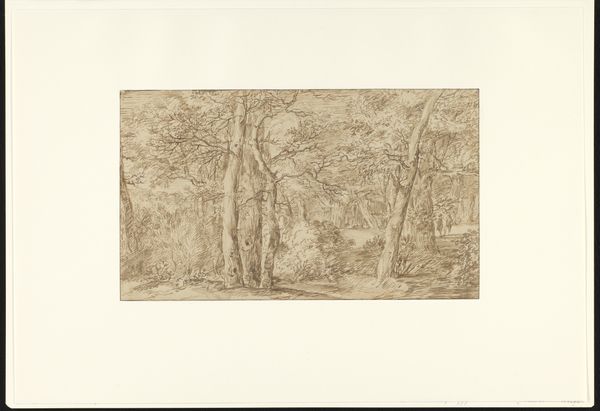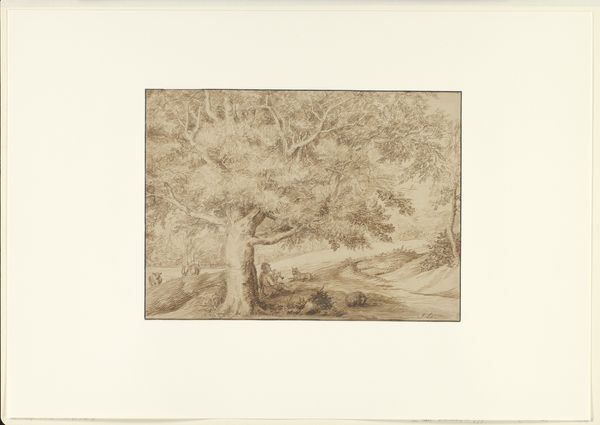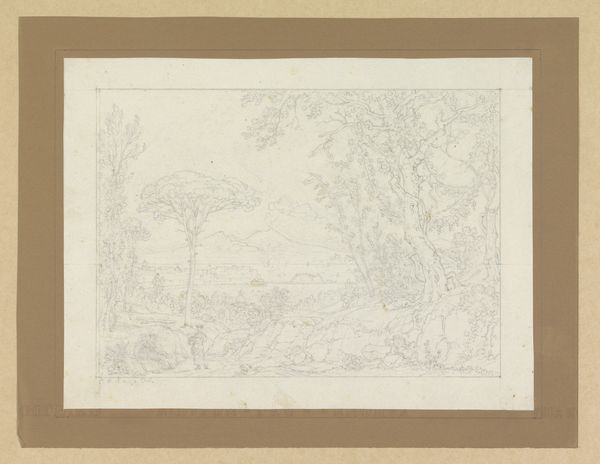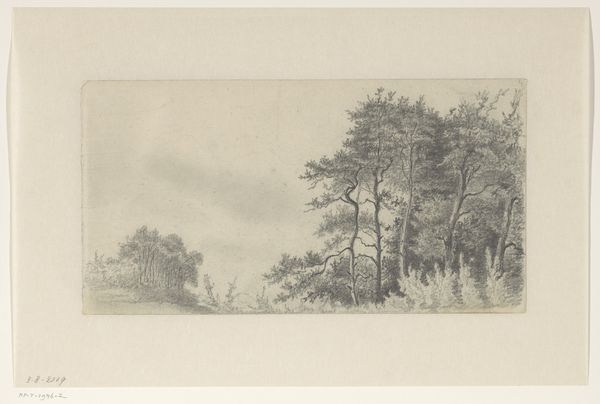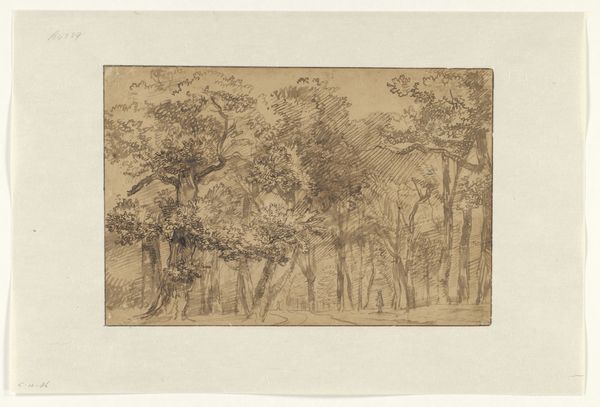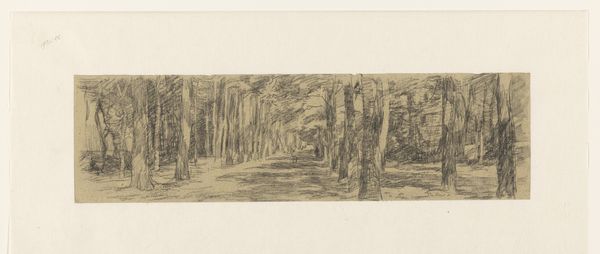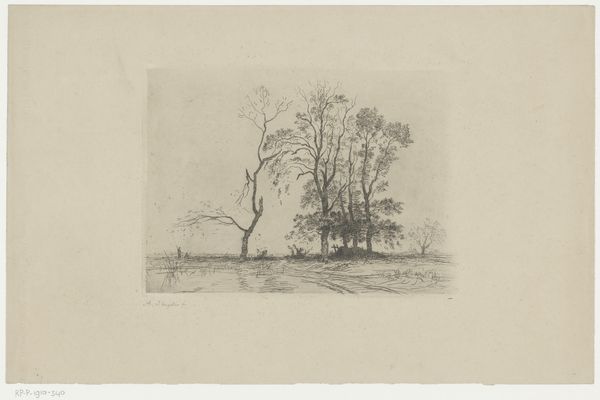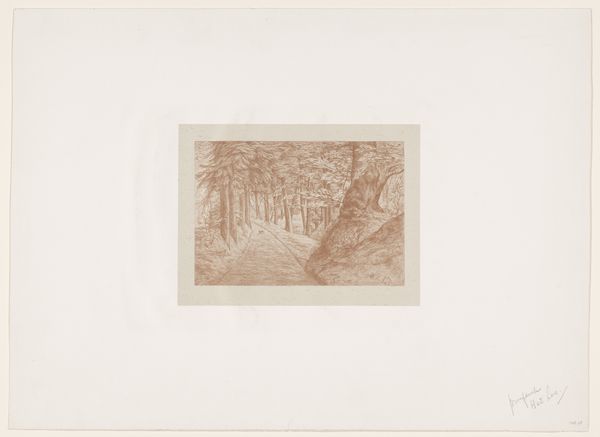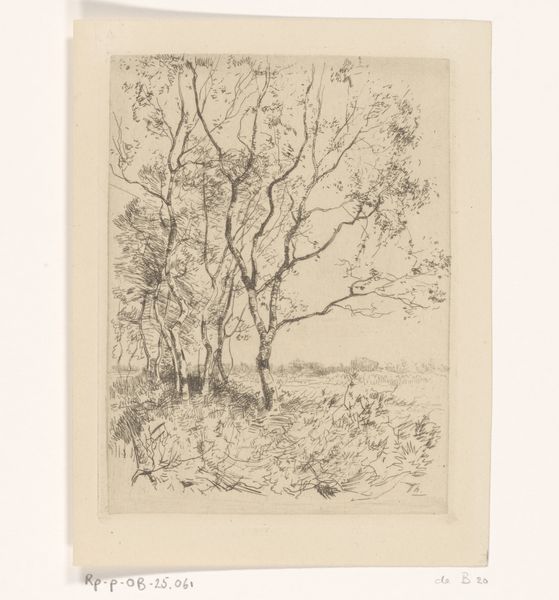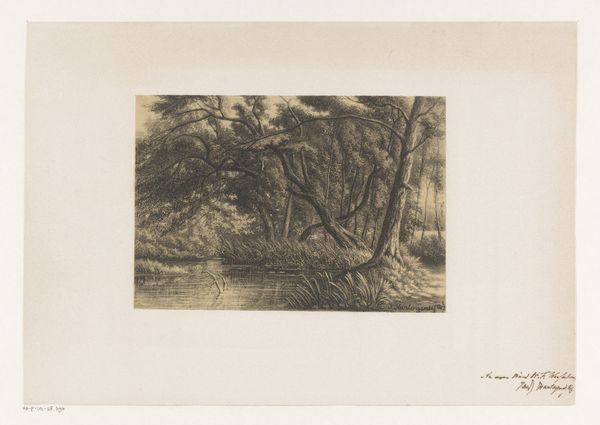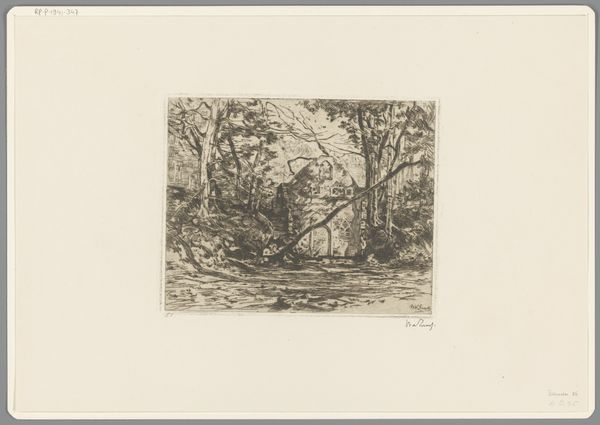
drawing, pencil
#
drawing
#
baroque
#
dutch-golden-age
#
landscape
#
etching
#
pencil
#
genre-painting
Dimensions: height 217 mm, width 372 mm
Copyright: Rijks Museum: Open Domain
Editor: So, here we have Jan Lievens’ "Wooded Landscape with Resting Couple," dating from the 1650s or 60s. It’s a drawing, seemingly pencil on paper. It’s so detailed, yet the scene feels quite tranquil. What do you see in this piece? Curator: I see the influence of the Dutch Golden Age’s socio-political context. After the Dutch Republic gained independence, there was a burgeoning middle class with disposable income and a taste for art reflecting their everyday lives. Genre painting flourished, and this drawing fits within that ethos. Do you see how the resting couple, almost lost within the trees, highlights the importance of nature and simple pleasures to Dutch identity at the time? Editor: That’s interesting. I was so focused on the almost romantic idea of escaping into nature. I didn’t really consider how national identity would be part of the reading. Curator: Precisely. The Rijksmuseum itself, by displaying and preserving art like this, plays a role in shaping and perpetuating those national narratives. We’re not just looking at a drawing, but at a piece of cultural history, constantly re-interpreted through a contemporary lens. The politics of imagery are at play here, too. Who gets to rest in a beautiful landscape? Whose labor made that rest possible? Editor: So it prompts all these larger social questions just from depicting a seemingly innocuous scene? Curator: Exactly! Art never exists in a vacuum. We're influenced by and influencing the social fabric. What’s been interesting reflecting upon today? Editor: Realizing there are deeper contexts woven into an image that at first seemed only decorative! Curator: Indeed! Art’s engagement with society encourages a greater sense of accountability from those with access and those without.
Comments
No comments
Be the first to comment and join the conversation on the ultimate creative platform.
